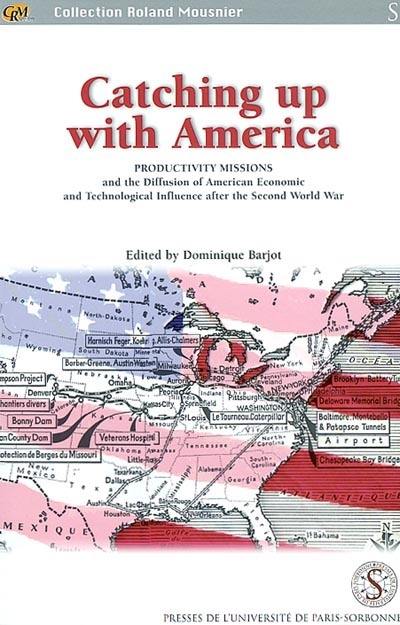
Fiche technique
Format : Broché
Nb de pages : 477 pages
Poids : 765 g
Dimensions : 16cm X 24cm
EAN : 9782840502401
Catching up with America
productivity missions and the diffusion of American economic and technological influence after the Second World War
proceedings of the Caen Preconference, 18-20 sept. 1997 ; workshop C45 of the Twelfth international economic history congress of Madrid, 24-28 August 1998
Quatrième de couverture
This book is the outcome of the conference held in Caen (France) in September 1997, in preparation for the International Economic History Congress in Madrid (August 1998). This collection of essays provides, for the first time, a systematic overview of the productivity missions organised in the years following the Second World War, to investigate in situ the production and management techniques adduced to account for the American lead. Bringing together research workers from many countries (Canada, Denmark, France, Germany, Italy, Japan, the Netherlands, Norway, Switzerland, the United Kingdom, the United States), the volume addresses four successive themes. The first one concerns the part played by the United States and that country's action on the international scene. This, in turn, leads to the subsequent query : Did the productivity missions constitute tools for modernisation, or were they devices of domination ? The second part considers three national experiences : the United Kingdom, France, and Japan. The third part examines a number of branches : iron and steel, electrical engineering, petrochemicals, and the tyre industry. The final part seeks to assess the impact of the missions. Ultimately, one needs must make a distinction between the rhetoric of productivity, on the one hand, and actual achievements, on the other ; the missions were part of a wider process of Americanisation, wherein lies one of the keys to the economic miracles of the post-war era.
Issue de la conférence de Caen de septembre 1997, préparatoire au Congrès international d'Histoire économique de Madrid (août 1998), l'ouvrage propose, pour la première fois, une synthèse sur les missions de productivité organisées au lendemain de la Seconde Guerre mondiale en vue d'étudier sur place les techniques de production et de management expliquant la supériorité américaine. Réunissant des chercheurs originaires de très nombreux pays (Allemagne, Canada, Danemark, Etats-Unis, France, Italie, Japon, Norvège, Pays-Bas, Royaume-Uni, Suisse), l'ouvrage aborde successivement quatre thèmes. Le premier concerne le rôle des Etats-Unis et leur activité internationale. Se trouve ainsi posée la question : les missions de productivité ont-elles constitué des outils de modernisation ou des instruments de domination ? La deuxième partie aborde trois expériences nationales : Royaume-Uni, France et Japon. La troisième s'intéresse à diverses branches : sidérurgie, électrotechnique, pétrochimie et industrie des pneumatiques. Quant à la dernière, elle cherche à mesurer l'impact des missions. En définitive, la distinction s'impose entre rhétorique de la productivité et réalisations effectives, les missions participant d'un processus d'américanisation dans lequel réside l'une des clefs des miracles économiques de l'après-Seconde Guerre mondiale.





